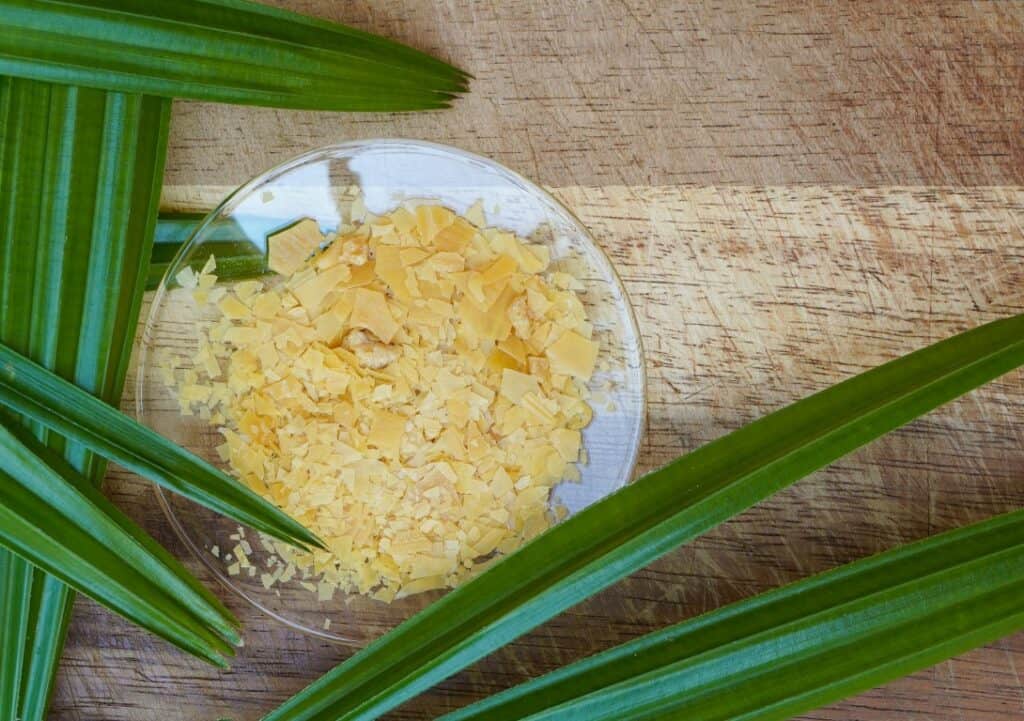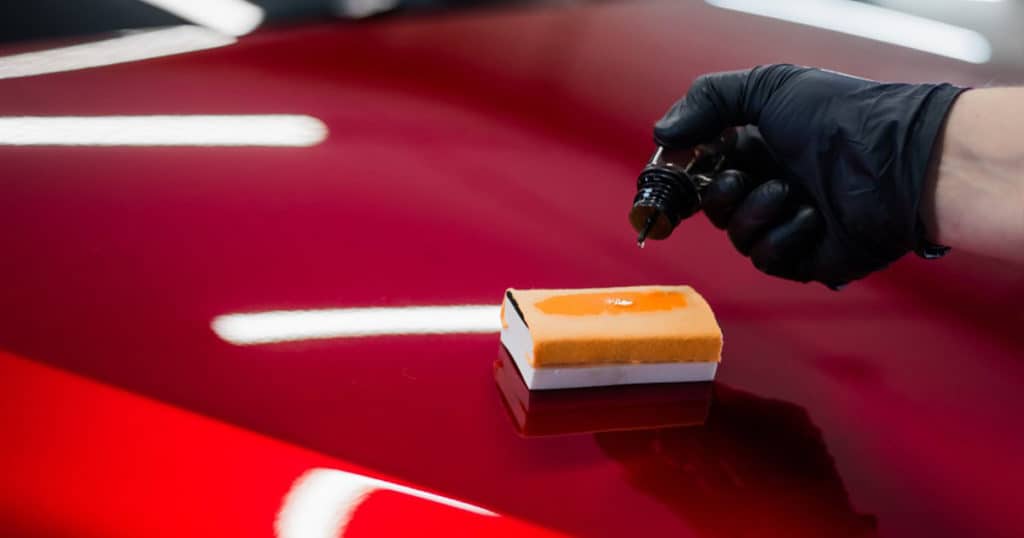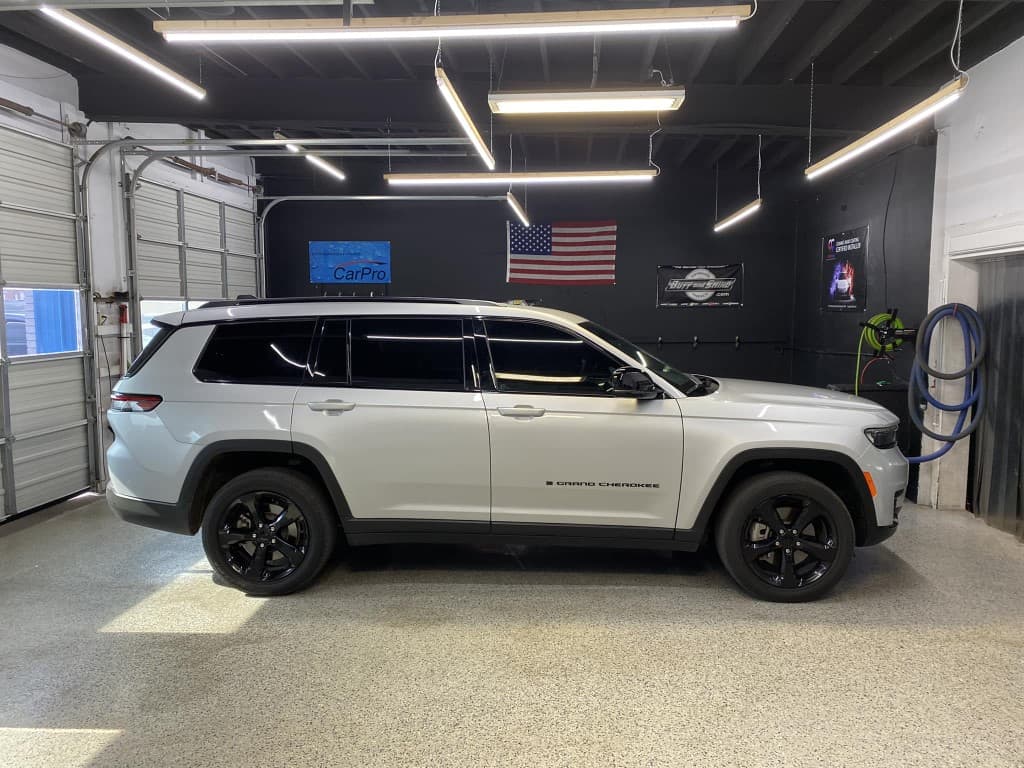When it comes to protecting your car’s paint, you have many options, from waxes and sealants to ceramic coatings. For this article, we want to focus specifically on the differences between Waxes and Ceramic Coatings. With a little bit of know-how, you can easily choose the one that meets your car’s needs.
Imagine taking your car back in time when waxing was the only option readily available; fast forward to today with the thousands of different products, and now you’ve got the advantage of nano ceramic coating technology.
Let us take you through the pros and cons of waxing and ceramic coatings, so you can pick the best paint protection method for your ride.
Understanding Wax as a Paint Protection Method
Carnauba wax is a natural wax derived from the leaves of the Brazilian palm tree called Copernicia prunifera. This wax is commonly used in car detailing products because of its unique properties and ability to enhance the appearance of a car’s paint.

One of the reasons carnauba wax is highly favored is its ability to produce a deep, warm shine on the car’s paint. The wax enhances the natural colors and reflections, making the vehicle look more eye-catching and beautiful.
Waxing is a popular paint protection method due to its affordability and ease of application. However, it may only last up to 2 months at best compared to ceramic coatings, which can last several years with the right products and maintenance.
Unlike ceramic coatings, which chemically bond with the paint, carnauba wax sits on the surface, and it can wear off over time, especially if exposed to harsh weather or frequent washing.
Waxes provide a warm glow to pop the paint for car shows. Still, they are not ideal for daily drivers since the protection and durability are much shorter.
Understanding Ceramic Coatings as a Paint Protection Method
A ceramic coating is a type of protective layer used in auto detailing designed to chemically bond with the surface of a car’s paint. Let’s break down how it works.
The ceramic coating is made up of tiny particles, like tiny building blocks. These particles are mostly made from materials like silicon dioxide (also known as silica) and titanium dioxide. All you need to know is that these materials are super strong and durable.

This bonding process is essential because it creates a strong protective layer on top of your car’s paint. It’s like putting on a transparent shield that acts as a barrier between the outside world and your car’s paint.
Ceramic coatings provide superior protection against heat, UV rays, and chemical damage from bird droppings and bugs. They also offer higher durability and resistance to environmental contaminants.
They are ideal for cars that are driven daily, as they can last up to 9 years, depending on the rated durability you have chosen. Ceramic coatings also offer extreme hydrophobic water-beading and dust repellency, making them an excellent option for maximum protection.

Regardless of the type of paint protection you choose, it is essential to keep up with regular maintenance for the best results. One of the best parts about ceramic coatings is they make your washing and maintenance a breeze. Providing a slick surface for dirt, grime, bird droppings, and more to slide right off during your maintenance wash.
Applying a ceramic coating requires professional know-how and expertise, so it is essential to use a reputable, professional auto detailing service for your ceramic coating application. As Coffee County’s leader in ceramic coatings, we invite you to call or visit our shop in Manchester to ask about our offerings.
Pros and Cons of Wax for Paint Protection
Let’s break down the pros and cons of waxing versus a ceramic coating.
Pros:
- Warm glow and depth, ideal to pop your paint for a car show
- Offers a level of protection versus a completely unprotected surface
- Ease of application
- Affordability
Cons:
- Not long-lasting, up to 2 months of protection
- Comes off easily with frequent washing
- Sits on top of the paint and does not chemically bond to the surface
Pros and Cons of Ceramic Coatings for Paint Protection
Pros:
- Long-lasting protection against UV, oxidation, and environmental contaminants
- Protection against chemical damage
- Enhanced scratch resistance
- Extreme hydrophobic repellency
- Makes washing your car much easier with a slick surface
- A high gloss finish adds depth and clarity to your paint
- Does not break down over time
- Increased resale value due to long-term protection and preservation of your paint
- Report to Carfax
Cons:
- Requires a professional application for the best results
- Not a Do-It-Yourself friendly application like wax
- Higher one-time cost versus wax or sealants
The lifetime value of a ceramic coating greatly exceeds the effort, time, and money spent reapplying wax every 2 months. Ceramic coatings offer unbeatable protection, making them the choice for anyone looking for long-term paint protection.
Wax or Ceramic Coating: What is right for you?
Ultimately, it depends on your lifestyle and the environment you drive in as to which option is best for you. Wax is a great option if you are looking for a showroom shine with temporary protection. While ceramic coatings are the way to go if you are looking for long-term protection with added depth, gloss, and ease of maintenance.
Frequently Asked Questions
Can wax and ceramic coatings be used together?
One of the many benefits of a ceramic coating is it eliminates the need for polishing and waxing your vehicle. As a matter of fact, waxes will not adhere to the paint due to the hardness of the coating. You also run the risk of damaging your ceramic coating if waxes or polishes are applied.
How long do waxes and ceramic coatings last?
Waxes typically last a couple of months. We are using Car Candy Ceramic Nano Coatings, which have set an extremely high bar as professional-grade nano-coatings. We offer a variety of Ceramic Coatings to fit your needs from 1-10 years of rated durability based on coating selection.
Conclusion
You’ve come to the end of the road in deciding between waxing and ceramic coatings for paint protection.
Waxing can give your car a stunning, warm glow, making it stand out at car shows.
Ceramic coatings, on the other hand, offer superior protection against the elements and make it easier to keep your car’s paint looking pristine.
If you have any questions about paint protection, we encourage you to visit or call our shop in Manchester, Tennessee; we’d be happy to answer any questions.
